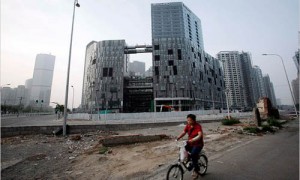 Growth in the property business in Asia Pacific this year will be driven by many countries and not just China as in the recent past, according to DTZ survey. The region’s solid performance will be supported by strong growth in the use of equity for investment as opposed to debt, intra-regional investment, and increasing willingness of banks to lend, the company says in its research report Money into Property 2012.
Growth in the property business in Asia Pacific this year will be driven by many countries and not just China as in the recent past, according to DTZ survey. The region’s solid performance will be supported by strong growth in the use of equity for investment as opposed to debt, intra-regional investment, and increasing willingness of banks to lend, the company says in its research report Money into Property 2012.
Asia Pacific has now surpassed North America to become the world’s second largest region with invested stock of US$3.9 trillion in 2011, said Hans Vrensen, Global Head of Research with DTZ.
The growth rate in real estate invested stock in Asia Pacific last year was 13% from 2010, making the region the best performer in the world.
Invested stock in Europe, the largest region, in 2011 stood at $4.5 trillion, a gain of 8% from the previous year. North America ranked third at $3.7 trillion with flat growth. Average growth worldwide was 7% to $12.1 trillion from $11.3 trillion in 2010.
Vrensen said China led the expansion in Asia Pacific in the past years but now the growth is more even across the entire region. “Other countries are growing more rapidly than China,” he said.
Stock growth in China slowed in 2011, whereas markets such as Taiwan and Southeast Asia performed better. Taiwan was the best performer with 21% growth in invested stock, followed by Malaysia at 20% and Singapore at 17%. Asean overall grew by 16%, compared with 8% in 2010 and flat growth in 2009.
Vrensen said the strong growth in Asia Pacific had also been supported by deleveraging, with greater use of equity for investment. Looking at total debt as a percentage of invested stock, the figure in Asia Pacific last year was 55%, better than the global average of 60%. North America was the highest with 67% and in Europe the figure was 58%.
Europe’s protracted debt crisis has also meant much tighter lending conditions, in contrast to Asia Pacific where lenders are more willing to fund property investment.
According to a DTZ global survey, 64% of participants expect tighter lending conditions this year, compared with just 10% giving the same response last year. Thirty percent of those surveyed this year believe the conditions will be the same, while 6% foresee relaxed conditions.
Unlike the global view, only 11% of participants in Asia Pacific expect tighter lending conditions this year. Fifty-six percent foresee the same conditions, and 33% hope for easing. Thirty percent of the participants expect credit to be tighter in Europe, the Middle East and Africa.
Banks may have problems with lending in Europe, but this is a concern for investment in Asia Pacific, added Vrensen.
Also supporting property investment growth in Asia Pacific is intra-regional investment. Sixteen percent of cross-border investment in Asia Pacific, excluding land deals, last year came from intra-regional sources, up from 9% in 2010. The share of inter-regional investment fell to 4% from 8% a year earlier, and domestic investment to 80% from 83%.
Vrensen said DTZ forecast invested stock in this region to grow by 7% this year and 10% in 2013 on a base case. He figures could be 4% and 6% respectively in the downside case, he added.






2 Comments
Hope India stands to gain out of this.
China realty is now a bubble waiting to burst any time soon.